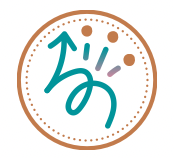In-Hand Manipulation Skills
This resource discusses in-hand manipulation skills, its importance and how occupational therapy can help. In addition, 25 in-hand manipulation exercises are provided. These easy to implement exercises are created based on items typically found around the home so no special manipulatives are required.

This content is not intended as a substitute for medical advice, diagnosis, or treatment. Always seek the advice of your physician, therapist, or other medical professional regarding a medical condition or treatment. This content is for information purposes only. See full disclosure here.
All links in this post are non-affiliate links, and are provided for your convenience.
What Are In-Hand Manipulation Skills?
In-hand manipulation is the ability to move a small object in a single hand without the assistance of the other hand. This skill is an important component of fine motor control. Good fine motor control and in-hand manipulation skills allows us to adjust and control our pencil grasp in order to form letters. It also allows us to tie our shoelaces, manipulate buttons, adjust a fork or knife in hand, or move a small object in the hand as if counting coins. In-hand manipulation skills are also needed while turning and adjusting the grip on paper while scissoring. This skill allows us to explore our environments by manipulating objects with our hands.
The Three Components Of In-Hand Manipulation Skills
There are three components that make up in-hand manipulation: Translation, rotation, and shift. Each of the three in-hand manipulations skills are presented below. Both translation and rotation have subcomponents and are described below as well.

In-Hand Manipulation Skill: Translation
The in-hand manipulation skill of translation can be broken down into two skills: 1) finger to palm translation and 2) palm to finger translation. Let me explain those skills. The first, finger to palm translation, is the ability to take small objects from the fingertips and move the object to the palm of the hand. This skill is often seen when picking up coins from a countertop followed by moving them to the palm of your hand using only a single hand.
The second type of translation, palm to finger translation, is the ability to move small objects from the palm of the hand to the fingertips. An example of this type of translation is when counting coins. Starting with coins in the palm of the hand, move the coins from the palm to the fingertips using the thumb and index finger. This action is often seen when counting coins to give to a cashier or placing coins in a piggy bank.

In-Hand Manipulation Skill: Rotation
Rotation is the ability to turn or rotate a small object between the pads of the fingers. There are two subcomponents of rotation: Simple and complex. Simple rotation occurs when a small object is rotated or twisted between the pads of the index and thumb as in twisting or rotating a chopstick or pencil. This same skill is seen when turning lamps on and off.
On the other hand, complex rotation is the ability to turn an object from end to end such as when flipping a pencil from the lead to the eraser. This fine motor skill can also be seen when flipping a coin between the fingertips. You can often see drummers performing this skill with their drumstick before beginning a song.

In-Hand Manipulation Skill: Shift
Shift is the ability to move an object between the fingertips to allow repositioning of the object in a forward or backward motion. This fine motor skill is seen when adjusting the fingers towards the lead of a pencil when beginning writing. This skill is also observed when adjusting your fork or spoon.
Why Are In-Hand Manipulation Skills Important?
As an occupational therapist, I look for this complex skill during evaluations while assessing a child’s fine motor skills. In-hand manipulation skills are vitally important to our daily lives in manipulating objects like buttons, adjusting a pencil, counting coins, and even while playing card games and participating in school-based skills.
Red Flags Of In-Hand Manipulation Skills
Individuals who have differences in their in-hand manipulation skills will often have difficulty completing everyday tasks. They may require additional time to complete a fine motor task. Often individuals may be seen using both hands to manipulate an object when it’s typically not needed or use their body or even a countertop to help support their hand.
Individuals who experience difficulties with this skill often:
- Require additional time to complete a fine motor task
- Have difficulty completing certain fine motor tasks
- May drop or appear clumsy with small objects
- Experience difficulties with handwriting, pencil control and legibility
- Manipulating clothing fasteners
- Difficulty adjusting the pencil for handwriting
- Controlling and turning paper while using scissors
- Difficulty fanning cards during a card game
How Can Occupational Therapy Help?
During an occupational therapy evaluation, fine motor skills are evaluated using various fine motor and visual motor assessments dependent on the therapist’s clinical judgment. The assessments will require various tasks to be performed based on the individual’s age. Concerns and goals regarding fine motor skills will be addressed. In addition, you may also discuss how fine motor skills may be impacting daily life and functional tasks such as writing, dressing skills, completing tasks at work or school, and how fine motor skill differences may be impacting hobbies and community outings. During sessions, the occupational therapist will address fine motor skill differences through various meaningful activities based on goals. A home exercise program will also be provided that addresses specific skills so that you can continue working on these skills at home.
If you have concerns regarding fine motor skills contact your physician and occupational therapist to schedule an occupational therapy evaluation.
In-Hand Manipulation Exercises



In-Hand Manipulation Skill Exercises: Translation
- Pick up small objects from the countertop such as coins, buttons, popsicle sticks, toothpicks, etc. Begin by using the tips of the index finger and thumb to pick up the object then move it to the palm of the hand to hold. Continue picking additional objects and moving them to your palm, holding all the objects.
- With several coins in the palm of the hand, move one coin at a time from the palm of the hand to the fingertips. Place it in a piggy bank, cup, or empty spice container.
- Go for a nature walk focusing on finding and picking up small objects from the ground bringing them to the palm of the hand such as small pebbles or seeds.
- With several coins in the palm of your hand, move one coin at a time from the palm to the fingertips. Now start stacking the coins on the countertop.
- While outside, pick the pedals of wild flowers or weeds and bring them to the palm of the hand.
- Crumple a piece of paper using one hand then spread it out flat and start again. Switch hands.
- When cleaning up small objects, pick up an item with your fingertips followed by moving that item to the palm of your hand. Hold the object in the palm of your hand while picking up additional objects and holding them in your palm.



In-Hand Manipulation Skill Exercises: Rotation
- Using a pencil or pen, rotate or turn the pencil between the fingertips flipping it from end to end.
- Have fun with spin tops
- Practice turning lamps on and off
- Flip a coin or button from side to side between the fingertips.
- Play peg piece puzzles, and focus on turning the piece between the fingertips to position it correctly to fit in the puzzle.
- Practice rotation using wind up toys.
- Using one game die, rotate the die between your fingertips searching for a specific number (see picture).
- Using a tennis ball or baseball, rotate the ball in the palm of your hand using your fingertips to manipulate it. You can also do this using two ping pong balls (or other round objects similar in size) and rotate them around the palm of your hand using your fingertips.
- Roll a piece paper into a “straw”
- Starting tinkering. Collect dull ended screws and nuts as well as small-medium sized piece of cardboard. Using the thick piece of cardboard punch holes for the screws to fit through. Practice placing the screws through the holes followed by securing it with a nut.
- Twirl a capped pen between the finger tips like a drummer twirls a drum stick. (see picture)



In-Hand Manipulation Skill Exercises: Shift
- Play a card game, work on dealing cards one at a time using one hand to bring a card forward using the thumb. Then use the opposite hand to pass cards to all players (see picture).
- While playing card games, work on fanning out the cards while holding them in one hand so that they can see each card. Don’t forget to switch hands.
- Practice turning pages in a book.
- Touch your finger tips one at a time to your thumb starting with your index finger followed by your middle finger, ring finger etc. Make sure to switch hands. (see picture)
- Practice snapping fingers. Switch hands.
- While holding a pen, practice pushing off the lid of the pen using just the fingertips.
- Practice moving the fingers along a pencil by inching the pencil forward towards the tip, and then backwards toward the eraser using one hand.

Thanks for stopping by! More fine motor and upper body resources will be added soon as I build out these pages. To stay up-to-date, sign up for the DIY Newsletter HERE.
Resources
- Marshal Pediatric Therapy has a great resource on in-hand manipulation skills.
- Another super helpful and informative resource on in-hand manipulation skills by OT Perspective
- A great resource with a lot of fun in-hand manipulation skill ideas from OT Toolbox








